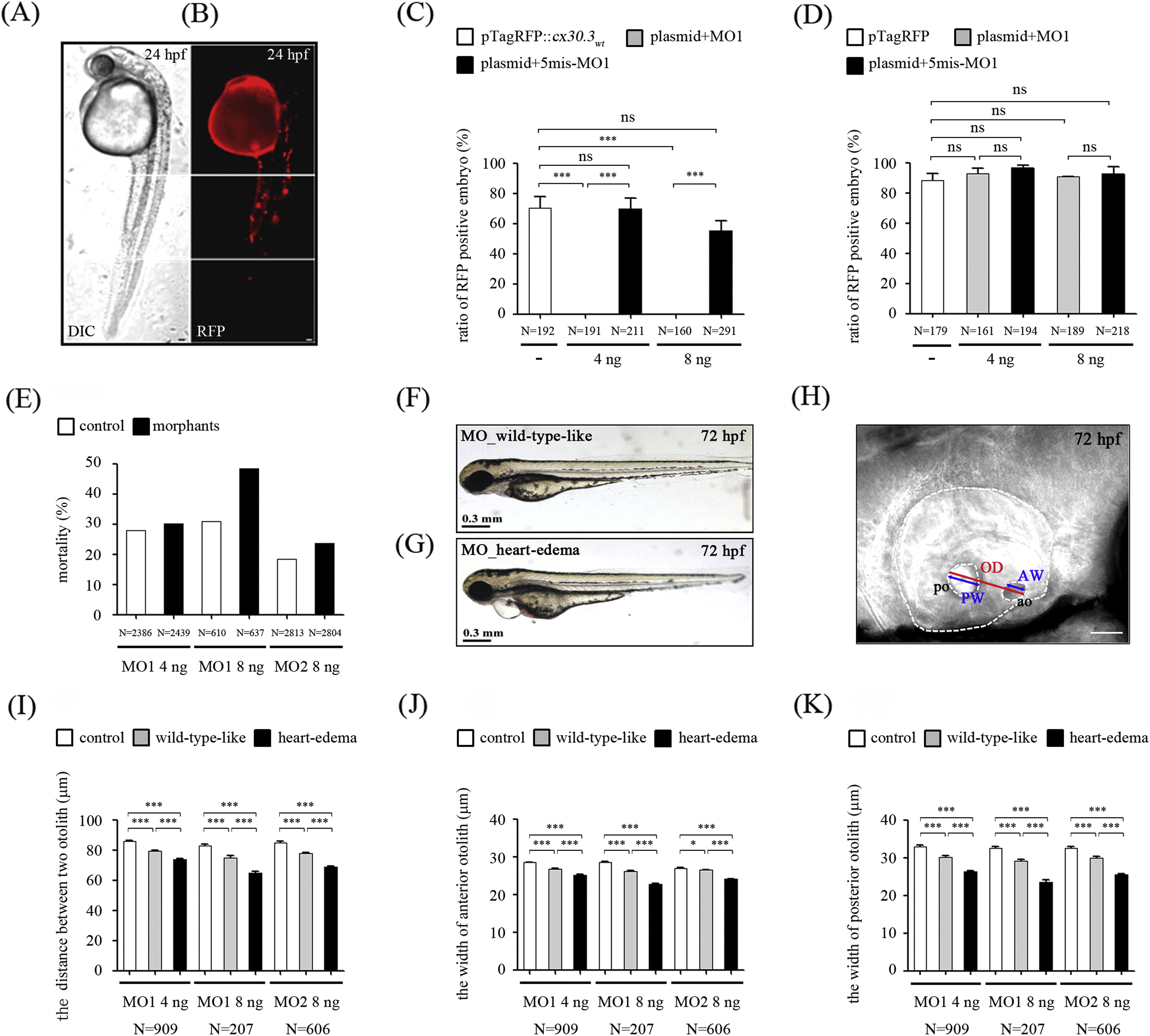Fig. 7
Morpholino knockdown of zebrafish cx30.3 expression in zebrafish embryos. (A) Either TagRFP proteins or TagRFP-tagged Cx30.3 fusion proteins was injected at the one-cell stage embryo in the presence or absence of morpholinos. Injected-embryos were observed at 24 hpf using fluorescence microscopy. (B) The mosaic expression pattern of TagRFP (fusion) proteins was shown in plasmid-injected embryos. (C) The ratio of Cx30.3-TagRFP positive embryos in the presence or absence of ATG-MO1 (MO1). The translation-blocking MO1 was able to completely knockdown the expression of Cx30.3 fusion proteins in both 4 ng and 8 ng morpholinos-injected embryos, whereas the negative control morpholino with 5 nucleotides substitution (5mis-MO1) had no significant effect. (D) Neither MO1 nor 5mis-MO1 was able to significantly reduce the TagRFP expression in embryos. Therefore, MO1 and splicing-inhibiting morpholino e1i1-MO2 (MO2) were injected respectively to in vivo knockdown cx30.3 transcripts in zebrafish embryos. The cx30.3 morphants, injected with 4 ng or 8 ng morpholinos (MO1 and MO2), showed the higher mortality (E) and mild alternation in their phenotype, termed wild-type-like (F) and heart edema (G), compared with the control-injected embryos at 72 hpf. All DIC images are lateral views, anterior is to the left and dorsal is up. Scale bars represent 0.3 mm. (H) The distance between two otoliths (OD) and the width of each otolith (anterior otolith, AW; posterior otolith, PW) were then measured at 72 hpf. The schematic presentation of the measurement in otic vesicle (white dotted line) was shown. Scale bars represent 50 µm. The statistical analyses visualize the significant reduction in the distance between two otoliths (n = 303 in each group) (I) as well as the width of anterior otolith (n = 69 in each group) (J) or posterior otolith (n = 202 in each group) (K) in both morphants (wild-type-like and heart edema). All data were presented as the mean ± SD and were considered significant difference for P < 0.05, P < 0.01 and P < 0.001 as compared with the control group. Overall, zebrafish cx30.3 morphants showed the wild-type-like and heart-edema phenotypes with smaller inner ear. ‘N’ represents the number of injected embryos. ao: anterior otolith, po: posterior otolith, AW: the width of anterior otolith, PW: the width of posterior otolith, OD: the distance between two otoliths.
Reprinted from Hearing Research, 313, Chang-Chien, J., Yen, Y.C., Chien, K.H., Li, S.Y., Hsu, T.C., Yang, J.J., The connexin 30.3 of zebrafish homologue of human connexin 26 may play similar role in the inner ear, 55-66, Copyright (2014) with permission from Elsevier. Full text @ Hear. Res.

